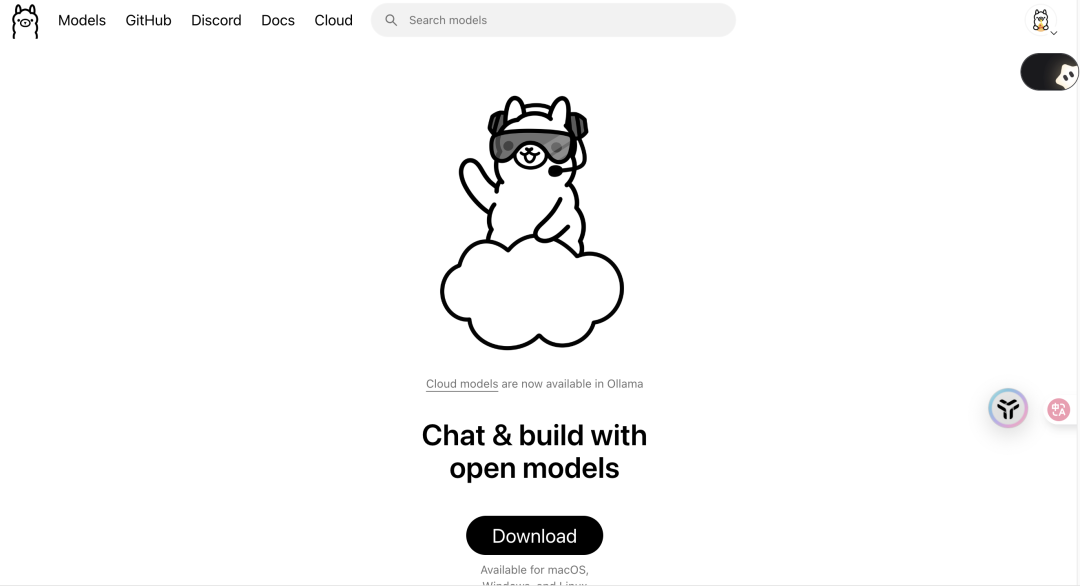Claude-007-Agents is a unified AI intelligences orchestration system designed for modern software development. It has over 75 specialized intelligences built-in that cover 14 different categories ranging from back-end and front-end to infrastructure and business strategy. At the heart of the system is its advanced coordination intelligence, which enables it to work together like a real development team. Each Intelligence has specific expertise, for example, some specialize in writing high-quality back-end code, while others are proficient in user experience design. The system emphasizes engineering excellence by making code quality, fault tolerance, and structured logging the top priorities of each Intelligence. In this way, it not only automates complex development tasks, but also ensures that the final output is a maintainable, scalable and highly reliable software product. In addition, it integrates real-time tools (MCP) that allow intelligences to directly manipulate code repositories and manage project tasks, thereby significantly increasing the level of automation and efficiency of the development process.
Function List
- unified system of intelligences: Provides over 75 specialized AI intelligences across 14 categories, covering the entire software development process.
- Advanced AI Orchestration: The system contains 4 core orchestrators capable of multi-dimensional analysis, intelligent agent selection, and optimized parallel execution for automated processing of complex tasks.
- Engineering excellence preferred: All intelligences prioritize code quality, fault tolerance (e.g., fuses), structured logging, and self-healing capabilities when performing tasks.
- Automated project analysis and configuration::
@team-configuratorIntelligent Bodies can automatically analyze a project's technology stack (e.g. Rails, Django, React, etc.) and generate the optimal Intelligent Body team configuration. - automatization
CLAUDE.mdDocument Generation: the ability to automatically create a detailed program based on the results of the program analysisCLAUDE.mdConfiguration file with personalized smartbody teams, usage examples, and submission process specifications. - Multiple installation and use modes: Supports global installation, copying files within a project or using symbolic links to meet the needs of different development scenarios.
- Real-time MCP integration: Integrates with GitHub MCP, Task Master MCP, and a variety of other tools that allow intelligences to perform real-time code repository operations, project task management, and document querying.
- Specialized Intelligent Body Classification: Intelligentsia are categorized into a number of well-defined categories such as general purpose, back-end, front-end, business, infrastructure, AI & analytics, automation and data.
Using Help
Claude-007-Agents is a powerful AI intelligences framework designed to simplify and accelerate the software development process by automating and specializing teams of intelligences. Below you will find details on how to install, configure and use this system.
1. Installation
First, you need to clone the code repository locally.
git clone https://github.com/avivl/claude-007-agents.git
cd claude-007-agents
The system provides three installation methods, you can choose the most suitable one according to your needs.
Way 1: Global Installation (recommended for advanced users)
After installing once in this way, it can be used in any project without repeating the configuration.
- Create a global directory and copy the smartbody files. You can choose a system path (requires
sudopermissions) or the user's home directory.# 系统路径 sudo mkdir -p /usr/local/share/claude-agents sudo cp -r .claude/agents /usr/local/share/claude-agents/ # 或者用户主目录 (无需sudo) mkdir -p ~/.local/share/claude-agents cp -r .claude/agents ~/.local/share/claude-agents/ - Configure Claude Code to use global intelligences. Create a configuration file
~/.claude/config.jsonand write the following.mkdir -p ~/.claude cat > ~/.claude/config.json << 'EOF' { "agents": { "globalPath": "/usr/local/share/claude-agents/agents", "fallbackToLocal": true } } EOFNote: Please place the
globalPathvalue to the path of your actual installation.
Way 2: Copy file to project (recommended for most projects)
This approach copies the smartbody files directly into your project directory, facilitating project-specific customization and version control.
- Go to your project directory.
cd /path/to/your/project - establish
.claudedirectory and copy the smartbody file.mkdir -p .claude cp -r /path/to/claude-007-agents/.claude/agents .claude/
Way 3: Use symbolic links (recommended for developers)
This approach allows the same smartbody file to be shared across multiple projects, and when the source repository is updated, all projects automatically get the update.
- Go to your project directory.
cd /path/to/your/project - Creates a symbolic link to a directory of intelligences.
mkdir -p .claude ln -s /path/to/claude-007-agents/.claude/agents .claude/agents
2. Quick start
Once the installation is complete, it is recommended to use the auto-configuration feature to get started quickly.
Step 1: Analyze the project and generate a team configuration
utilization @team-configurator Intelligent Body to analyze your project. It will automatically detect the technology stack you're using (e.g. React, Django, etc.) and recommend the optimal combination of Intelligent Body teams.
claude "Use @team-configurator to analyze my project structure"
Step 2: Generate CLAUDE.md configuration file
Based on the results of the analysis in the previous step, a CLAUDE.md File. This file is the configuration file for your AI development team and contains team members, usage examples, workflows, and key requirements that must be followed before committing code.
claude "Use @team-configurator to analyze my project structure. Based on the team configuration analysis, create a CLAUDE.md file for my project"
This command does the following automatically:
- Test your tech stack.
- Configure specialized intelligences with integrated fault tolerance and logging.
- Generate team recommendations containing best practices and usage examples.
- Add important code submission requirements and checklists at the top of the document.
3. How to use intelligences
Once configured, you can interact with the Smartbody in two main ways:
Direct invocation of individual intelligences
When you have a clear, specific task, you can directly assign a particular intelligence to accomplish it.
- Example 1: Let Rails backend experts create a user management feature that includes a fusion mechanism.
claude "Use rails-backend-expert to create user management with circuit breakers" - Example 2: Let the React component architect create a component with elegant error handling.
claude "Use react-component-architect to create components with graceful error handling"
Complex tasks through orchestrators
When the task is complex and requires the collaboration of multiple intelligences, the orchestrator can be invoked. The orchestrator automatically analyzes the task and coordinates multiple specialized intelligences to work together.
- Example 1: Build a complete e-commerce platform that allows the orchestrator to intelligently orchestrate a team of agents.
claude "Use @orchestrator to build e-commerce platform with intelligent agent coordination" - Example 2: Let the technical lead orchestrator design the microservices architecture and coordinate cross-team efforts.
claude "Use @tech-lead-orchestrator to design microservices architecture with cross-team coordination" - Example 3: utilization
@project-analystAnalyze the Product Requirements Document (PRD) and automatically generate a detailed task breakdown list.claude "Use @project-analyst to parse PRD and create comprehensive task breakdown with dependencies"
With the above steps, you can utilize Claude-007-Agents' powerful AI team to assist your software development efforts, from simple code writing to complex system architecture design, to improve development efficiency and code quality across the board.
application scenario
- Full Stack Application Development
Users can utilize the orchestrator (@orchestrator) to build a complete Web application. For example, starting with a requirements analysis, the@product-managerwill define the functional roadmap.@django-backend-expertis responsible for building back-end APIs with fault tolerance and logging, while the@react-component-architectIn turn, it is responsible for developing the front-end interface with error boundaries. The whole process is done collaboratively by AI intelligences. - Infrastructure as Code (IaC) and DevOps
When it comes to designing and deploying a cloud infrastructure, you can call the@cloud-architectto design a highly available multi-region AWS architecture. At the same time, the@devops-troubleshooterCan assist with troubleshooting and repair in the event of a problem in the production environment (e.g. API 503 error). - Code Refactoring and Quality Improvement
For existing older projects, it is possible to utilize@code-reviewerThe code is analyzed and suggestions for improvement are made. Also, it is possible to specify intelligences (such as@rails-backend-expert) refactoring of specific modules, introduction of modern engineering practices such as fuses, structured logging, etc. to improve code maintainability and system stability. - Automated Project Management and Documentation
@project-analystIt is able to read the Product Requirements Document (PRD), automatically decompose it into specific development tasks, and identify the dependencies between tasks. Upon completion of development, the relevant intelligences can assist in generating technical documentation to ensure synchronization of code and documentation.
QA
- How is this system different from other AI programming assistants?
Claude-007-Agents is different in that it is an "orchestration system", not just a programming assistant. It mimics the collaboration of a real development team, with more than 75 intelligences with different specialized skills, and coordinates them through an "orchestrator" to accomplish complex tasks. It emphasizes the production environment requirements of code quality, fault tolerance, and observability, not just code generation. - Do I need a specific development environment to use it?
The system is primarily designed to work withClaude CodeTool Integration. You need to set up theClaude Code, then install and configure it with a few simple commands. It supports multiple installation methods (global, in-project, or symbolic links) and can be flexibly adapted to your development environment. - How does the system know which technologies are used in my project?
The system operates through a system called@team-configuratorThe special intelligence to do this. When you run it, it scans your project's directory structure and files to automatically detect the technology stack being used (e.g., detecting theGemfileIt is assumed to be a Rails project that detects thepackage.jsoncap (a poem)next.config.jsConsider it a Next.js project) and recommend and configure the most appropriate team of intelligentsia for you accordingly. - Can I create my own intelligences?
Can. The project provides templates and guidelines for creating custom intelligences, encouraging users to extend the system for their specific needs. You can add support for new frameworks or create intelligences with specific business logic processing capabilities.































